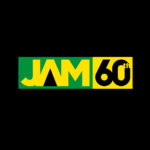As we approach Jamaica’s Independence celebrations in August we choose to highlight meaningful contributions from Jamaicans and other Caribbean figures to the Black movement in the United States.
Black History Month which occurs in February reminds Americans that the country wouldn’t be as prosperous and sustainable if it weren’t for the hard work, innovation, and courage of Black Americans who came before them. As such, we choose to highlight the influence and accomplishments as we start off the month of February.

Black History Month celebrates the achievements of African Americans each year and is a time to recognize their crucial role in American history. The event is also known as African American History Month. It was created out of “Negro History Week,” which Carter G. Woodson, a noted historian, and other prominent African Americans. Every president of the United States has designated February Black History Month since 1976. Canada and the United Kingdom also dedicate a month to Black history.
Origins of Black History Month
The Black History month story began in 1915, almost a century after the Thirteenth Amendment dissolved slavery in America.
In September of that year, Carter G. Woodson, a Harvard-trained historian, and Jesse E. Moorland (a prominent minister) founded the Association for the Study of Negro Life and History. This organization is dedicated to researching and promoting the achievements of Black Americans and peoples of African descent.

Over the years, the mayors of major cities throughout the country issued proclamations each year to recognize “Negro History Week.” In the 1960s, “Negro History Week”, thanks to the civil right movement, and growing awareness of Black identity on college campuses, had become Black History Month.
In 1976, President Gerald Ford declared Black History Month. He asked the public to “seize this opportunity to honor Black Americans in all areas of endeavor throughout our history and society”– from civil rights pioneers like Harriet Tubman and Sojourner Truth to scientists and leaders in science, politics, culture, and industry.
The Caribbean Connection
People from the Caribbean were taken to America in 17th century as slaves. The beginnings of a strong Caribbean community was established in South Carolina and Virginia by British slave masters who took slaves from Barbados around 1650. The majority of South Carolina’s slaves were from Barbados up to 1750. It was estimated that as high as 20 percent of South Carolina’s slaves were from the Caribbean. The majority of slaves living in the north states were also of Caribbean origin. Slaves from New York were three times more likely to be from the Caribbean than those from Africa.
A strong Caribbean community grew in Boston, Massachusetts, along with New York, Virginia, and South Carolina.
The U.S.’s foreign-born black population was overwhelmingly of Caribbean descent after the American Civil War ended in 1865. It grew from 4,000 to more than 20,000 between 1850-1899.
The Caribbean population began to grow in America, with relatively unknown people such as Robert Campbell, a Jamaican who was assistant principal of Philadelphia’s Institute of Colored Youth in 1855, David Augustus Straker (Barbadian lawyer, educator and journalist), Jan Earnst Matzeliger, of Suriname, an inventor of a shoe-making machine in the 1870’s; William Crogman St Martins, Latin scholar, former president of Clark College, and founder of the American Negro Academy; Joseph Atwell, Barbadian who, in 1867, was the first Blackman to be ordained by the U.S. Episcopal church
According to one historian, West Indian immigrants in the 19th century were considered “paragons of intelligence” and “men of breeding”.
The U.S. population comprised black foreigners and their descendants increased from 55,000 in 1900, to 178,300 by 1930. Most of them came from the Caribbean, which includes Cuba. While many Bahamians settled in Florida, New York City was the main destination, particularly Manhattan and Brooklyn. Nearly a quarter of Harlem’s black population was of Caribbean descent. Harlem is also known to have been the largest West Indian city other than Kingston, Jamaica.
Watch Anthony B – Black & Proud music video
The new migrants of the 1920’s were not just laborers. They also included a middle-class of teachers, nurses, and civil servants dissatisfied by the low salaries attained in the Caribbean. These latter individuals, who travelled to the U.S. to further their education, increased the number of skilled, white-collared, and professional Caribbean-Americans.

The number of Caribbean immigrants who arrived in the United States through New York City during the first 30 years of the 20th Century was significantly increased. Unfortunately, most of these migrants were black and not enough recognition was given to the Caribbean-American population.
This resilient and resourceful population gained their identity quickly in all spheres of American life, including business, politics, education and entertainment. Outstanding people from the Caribbean community include Marcus Garvey and Claude McKay. James, Sidney Poitier and Julian ‘Canonball” Adderly who were regarded as the Fathers of Harem Radicalism.
Many historians of Caribbean-American heritage consider the early 20th century waves of Caribbean immigrants to be the foundation of Caribbean-American life in America, especially in New York City. A significant number of New York City’s black professionals, and business-people in the 1930’s, was of Caribbean descent. They were mostly located in Harlem.

This wave of Caribbean immigrants created a Who-Is Who in American history, especially black American history. It includes: Malcolm X. Louis Farrakhan. Harry Belafonte. Colin Powell. Cicely Tyson. Shirley Chisholm. Kareem Abdul Jahbar, Tim Duncan. Yaphet Kotto.
You May Also Like






